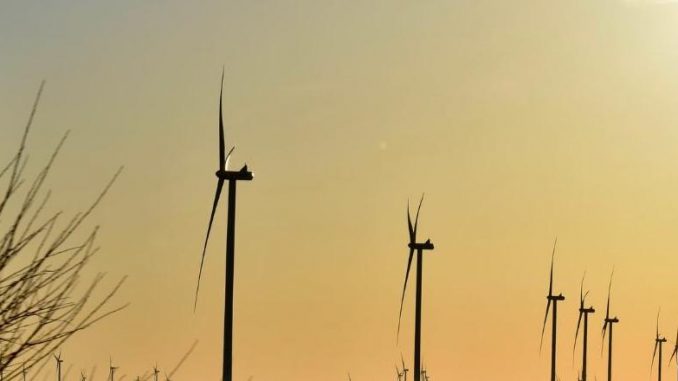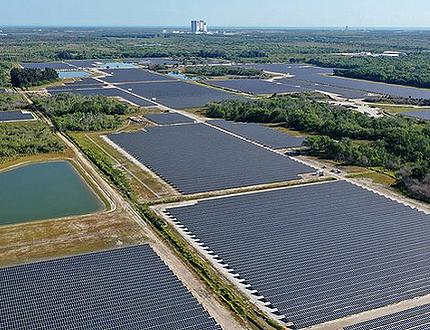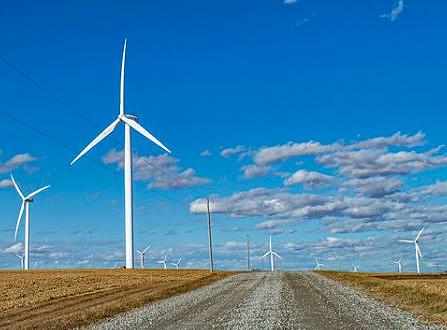
BERKELEY, California, April 20, 2021 (ENS) – Climate change concerns are driving a growing number of states, utilities, and corporations to set the goal of zeroing out heat-trapping carbon emissions from the power sector.
To date, 17 states plus Washington, DC and Puerto Rico have adopted laws or executive orders to achieve 100 percent carbon-free electricity in the next two to three decades. Additionally, 46 U.S. utilities have pledged to go carbon-free no later than 2050. Together, these goals cover about half of the U.S. population and economy.
These are ambitious targets, but a new look at the past 15 years in the electricity sector shows that large reductions in carbon dioxide (CO2) emissions are possible. The most prevalent greenhouse gas, CO2 is emitted into the atmosphere by the burning of fossil fuels – coal, oil and natural gas, among other sources.
Now, new research from the Lawrence Berkeley National Laboratory, one of the 29 Department of Energy, DoE, labs, analyzes historical trends to learn how much progress the power sector has made to date in reducing emissions.
The study, “Halfway to Zero: Progress towards a Carbon-Free Power Sector,” looks back at the 2005 Annual Energy Outlook from the Energy Information Administration, the U.S. government’s official agency for data collection and analysis.
“Business-as-usual projections saw annual carbon dioxide emissions rising from 2,400 to 3,000 million metric tons (MMT) from 2005 to 2020,” said Berkeley Lab scientist Ryan Wiser, lead author of the study, funded by the DoE’s Office of Energy Efficiency and Renewable Energy.

“But actual 2020 emissions fell to only 1,450 MMT. The U.S. cut power sector emissions by 52 percent below projected levels – we are now ‘halfway to zero,” Wiser said.
Relative to projected values, the study found that total consumer electricity costs over the 15 year period were 18 percent lower than projections, costs to human health were 92 percent lower, and costs to the climate 52 percent lower.
At the same time, the number of jobs in electricity generation was 29 percent higher than projected in 2005. While employment patterns have shifted to accomodate changes in the power sector, electricity supply is supporting 200,000 more jobs than might have been the case under the earlier projection.
Drivers of Change
From technological advances to policy, the study identified the main drivers from the last 15 years that contributed to lower carbon emissions in the U.S. power sector.
Total demand for electricity was almost exactly the same in 2020 as it was in 2005, and was 24 percent lower than projected 15 years earlier.
“This drop in demand was due in part to sectoral and economic changes, but also to greater energy efficiency driven by policies and technology advancement,” said Wiser.
The researchers found that wind and solar power outperformed expectations, delivering 13 times more generation in 2020 than projected.
This is, in part, a result of technology development and state and federal policies, as prices plummeted for new wind and solar technologies.
Nuclear generation has largely held steady, tracking the past projections, the study found. But reports newly released by the U.S. Energy Information Administration and the U.S. Federal Energy Regulatory Commission confirm that the mix of renewable energy sources – biomass, geothermal, hydropower, solar, and wind – out-performed and expanded their lead over nuclear power in 2020.
Renewables accounted for a greater share of the nation’s installed utility-scale generating capacity than did nuclear power and provided more actual electrical generation than did nuclear power.
Switching from coal to natural gas for power generation played a role in lowering carbon emissions, the study found. Natural gas generation has grown rapidly since 2005, driven by the proliferation of shale gas – fracking and low fuel prices.
Reduced sulfur and nitrogen emissions led to lower health impacts, such as respiratory disease, with premature deaths falling from 38,000 to 3,100 per year, the study found.
“Compared to the business-as-usual projection, not only did the nation significantly reduce its carbon footprint, but it did so while also reducing total energy bills and health burdens,” said Dev Millstein, co-author and Berkeley Lab scientist.
A Look Ahead
While a look back shows that big changes in emissions are possible over a 15-year span, the study points out that this does not guarantee that the next 15 years will see similar progress.
Advancements in wind, solar, and battery technologies will play near-term roles in power-sector decarbonization.
Much of the clean energy capacity needed to approach a zero-carbon power-sector target is already in the development pipeline, the study finds. Some 660 gigawatts (GW) of new wind and solar power development projects have requested transmission access, more than half of what might be required to approach a zero-carbon power-sector target.

Not all proposed projects will be built, but the scale indicates interest in development.
Wiser points out there are challenging infrastructure requirements related to scaling up renewable energy.
The power sector will have to ensure electricity delivery, reliability, and resilience; build new transmission infrastructure; change planning and grid operations; revise siting processes; and focus attention on impacted workers and communities.
And when the wind doesn’t blow and the sun doesn’t shine, the study calls for further research, development, and demonstration of the numerous existing technologies that can fill this gap, such as longer-duration energy storage, hydrogen or synthetic fuels, bioenergy, fossil or biomass generation with carbon capture, nuclear energy, geothermal energy, and solar-thermal with storage.
“As the country maps out a plan for further decarbonization, experience from the past 15 years offers two central lessons,” said Wiser. “First, policy and technology advancement are imperative to achieving significant emissions reductions. Second, our ability to predict the future is limited, and so it will be crucial to adapt as we gain policy experience and as technologies advance in unexpected ways.”
Featured image: Meadow Lake Wind Farm along I-65, Indiana, March 29, 2021 (Photo by
Raed Mansour)
© 2021, Environment News Service. All rights reserved. Content may be quoted only with proper attribution and a direct link to the original article. Full reproduction is prohibited.
